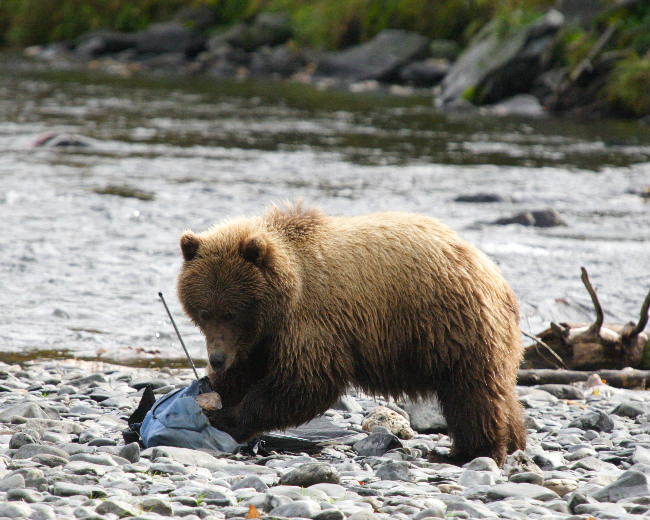Bear Bagging And Other Ways To Protect Your Dinner
Close encounters with wildlife are part of the reason we head outdoors. But when that wildlife is a bear, and it's eating your food, it can put a damper on a camping trip. It's no better to see a raccoon, field mouse or squirrel helping itself to your dinner—and breakfast and lunch—either. Critter-proof your food with one—or, for the ambitious, all—of these techniques.
Hanging
How to do it: Load all food, and anything else with strong odors (toothpaste, sunscreen, hand lotion, soap, Skin-So-Soft bug repellent, etc.), in its own pack, barrel pack or waterproof bag. Then, string it up over an outstretched limb or between two trees.
Insider knowledge: Set up the bear rope early in the evening to make your pre-bedtime stowing as frictionless as possible—just pull the food pack up and call it a night. There's nothing worse than looking for a proper food-hanging tree in the pitch dark. Also, be sure to choose a tree well away from camp, at least 90 feet into the forest, and not on a oft-traveled trail. A bear, especially in a busy park, will quickly learn each campsite's food cache if it's easy to locate.
It helps to tie a piece of florescent flagging tape onto the bear rope. It's not all that easy to re-locate your bear rope in the bush; flagging tape helps more than you'd think.
Pulley System
For the first few days of a trip—particularly a canoe or group trip, where you might tend to travel heavier—the food bag may be a little too heavy to lift, but pulleys make it easier.
How to do it: Bring two sections of rope, one with a small metal pulley (found at any hardware store) tied to one end. Pass the other rope through the pulley. Throw the pulley rope over the branch and tie the other end to a tree. Hoist up the heavy pack with the other rope. The pulley also acts as a good weight on the end of the rope while tossing it over a single limb or over a rope tied between two trees.
Bear Barrels
Some canoeists have opted to use water-resistant gear barrels for keeping their food safe.
How to do it: Use these only with the hanging or pulley system. They're great for keeping everything dry and relatively odor-free, and they can come in handy when traveling in the far north, where there are no tall trees to hang your food from.
Insider knowledge: These barrels are NOT bear-resistant like the Bearikade, Backpacker's Cache and BearVault food canisters. In the last few years, there have been numerous reports of bears associating the barrels' blue color with food. With the bear-resistant type, however, it's as easy as putting your food inside and setting it on the ground well away from your tent, as well as away from slopes or water. If a bruin does happen upon it, he'll likely knock it around quite a bit in an attempt to open it.
Food Floating Technique
How to do it: Another food storage alternative for canoeists is to load up your boat and then anchor it out in the lake for the night.
Insider knowledge: Personally, I'd be far too paranoid about a storm blowing the canoe away to attempt this. Bears have also become used to this technique in some parks and will swim out to fetch the food stored in the canoe.
